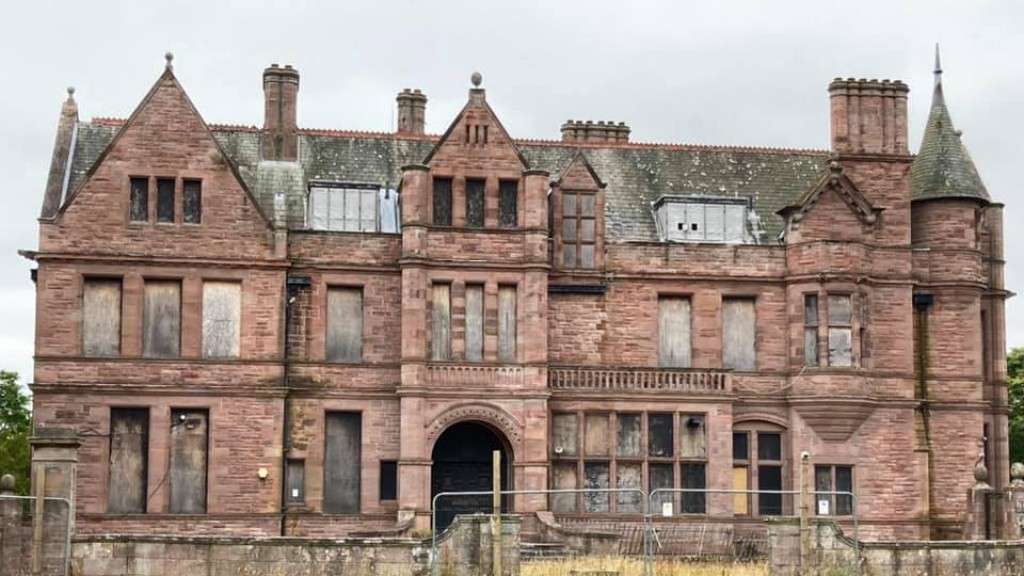Building of the Month April 2024: Craigtoun Hospital, Craigtoun Park, St Andrews, Fife, KY16 8NX

This stately mansion built around 1903 by Paul Waterhouse (1861-1924) was built for a wealthy businessman. It is Category B listed and stands in a Registered Park.
Latterly known as Craigtoun Hospital, this large, looming building incorporates a range of architectural characteristics including early Renaissance and Scottish Baronial features. Originally known as Mount Melville House it was rebuilt for the Younger family of brewery fame around 1903. Built out of hammer-dressed pink sandstone, it also has a Westmoreland slated roof and stone mullion and transomed windows.
In 1947 Mount Melville House along with 47 acres and the East and West Avenues, was bought by Fife County Council for £25,000. Its name was changed to Craigtoun, and the grounds were established as a Country Park. The remainder of the estate continued to be farmed by the Mount Melville Estate. The mansion became a hospital until 1992 when it was sold, together with 330 acres of parkland to the Old Course Hotel, St Andrews who developed the Dukes Golf Course in the West Park. The building has been disused since the closure of the hospital and has been regarded as seriously at risk for a number of years.
Over that time that it has stood empty, its condition has deteriorated and despite previous permission for conversion, no work has proceeded. It has been on the Scottish Buildings at Risk Register for some years (click here to see the entry) and was nominated for inclusion on our register in 2022. At the start of 2023, a new application was submitted that would see the conversion of the house into apartments and 18 new units by way of enabling development (Planning ref:22/04134/LBC). The proposals involved some demolition of curtilege structures and the introduction of some new features on the roof.
Formal permission was granted for the development at the end of 2023. The status of the building as seriously at risk and its place on the Scottish Buildings at Risk Register was used as the central justification for permitting the enabling development which otherwise would not have been permitted in this sensitive location. This is of course the idea of enabling development but it does not always lead to the promised restoration. In this case it seems however that as the whole scheme is entirely premised on this principle and the building itself is so prominent a part in the scheme and the wider protected landscape that this will proceed as intended.
It is not clear when development will commence and we will keep the building on the register until work to the house is complete. It appears likely that it will be the enabling part of the development which will be built and sold first in order to fund the restoration work needed on the house.
